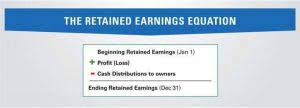Deducting Business Bad Debts
Content
To assume a more attractive position and reduce its tax liability, banks often write off toxic loans, the most common form of bad debt for a bank. If a business owner loans money to an individual and the person cannot repay the loan, what happens? The business may be able to win a settlement in court, but legal costs will eat significantly into any recovered funds. For debt of $10,000 or less, small claims court may be the only option, but it’s also stressful and time consuming. In the future, when a specific account receivable is finally written off as “uncollectable,” the individual or company’s account debits Allowance for Doubtful Accounts and credits the Accounts Receivable. Bad debt can be harmful to your business, especially if it happens frequently. Not being able to collect payments when you provide a good or service can slow down your cash flow.

The taxpayer may choose from among the following options concerning how to handle the debt for tax purposes (Regs. Sec. 1. In other words, the taxpayer must be able to show that at the time of the transaction, he or she had a real expectation of repayment and there was an intent to enforce the indebtedness. A formal loan agreement is not absolutely necessary to create a bona fide debt. Also, the giving of a note or other evidence of legally enforceable indebtedness is not in itself conclusive evidence of a bona fide debt.
Steps To Take When Writing Off Unpaid Invoices
As you can see, there are two prominent methods one can employ when attempting to write off bad debt. The first method, the direct write off, is simpler but not appreciated as often. The sales balance sheet will report a more realistic net amount of account receivable that will eventually be converted into actual cash and be credited to the individual or company’s account.
- If it later becomes clear that the deduction should have been claimed in a later year, an amended return can be filed for the earlier year.
- The debtor’s bankruptcy, however, generally does indicate that an unsecured business debt is at least partially worthless (Regs. Sec. 1.
- If the client files for bankruptcy, the full amount of the debt may be unrecoverable.
- The general rule is to write off a bad debt when you’re unable to contact the client, they haven’t shown any willingness to set up a payment plan, and the debt has been unpaid for more than 90 days.
A business that extends credit to its customers may find that some of its invoices are paid late, or in some cases not at all. Collecting bad debt is a critical part of maintaining your cash flow and keeping a healthy balance sheet. At some point, however, a debt becomes so far delayed that it has to be written off. IRS requires small businesses to use the direct write off method to calculate these deductions. The allowance method asks businesses to estimate their amount of bad debt, which isn’t an accurate enough way to calculate a deduction for the IRS. The direct write off method is a way businesses account for debt can’t be collected from clients, where the Bad Debts Expense account is debited and Accounts Receivable is credited.
How To Write Off A Bad Debt
The direct write off method is one of two methods to account for bad debts in bookkeeping. With good professional advice and advance planning, bad debts from legitimate lending transactions can be treated as such for federal income tax purposes. It’s sometimes difficult to prove that a debt became worthless in a particular tax year. In the event of an audit, the IRS may take the position that worthlessness occurred in a year earlier than the year in which the bad debt deduction was claimed.
Basically, it is an irrecoverable receivable – a type of expense that occurs when a customer to whom you have extended credit is no longer able or willing to pay you. In accounting terms, this is known as a “bad debt expense” which must be charged against your company’s accounts receivable. The Bad Debts Expense remains at $10,000; it is not directly affected by the journal entry write-off. The bad debts expense recorded on June 30 and July 31 had anticipated a credit loss such as this. It would be double counting for Gem to record both an anticipated estimate of a credit loss and the actual credit loss. For financial reporting purposes the allowance method is preferred since it means the loss is recognized closer to the time of the credit sales.
Credits & Deductions
Once the expense has been moved, the unit’s finance manager, BSC director, or college business officer should send the write-off request to the university controller. Include in the backup a brief narrative of the reasons for the write-off, evidence of multiple collection attempts, and the account number that will fund the write-off. Asset/Liability Reconciliation Guidelinesrequire that accounts receivable object codes be reconciled monthly, assuming monthly activity has been posted. An accounts receivable reconciliation should include an aged list of outstanding invoices and amounts that agree to the general ledger balance.

This is in line with the accrual basis of accounting – probable expenses are recognized when invoices are issued to customers. Doubtful Debt represents an expense that reduces the total accounts receivable of a company for a specific period. In the direct write off method, a small business owner can debit the Bad Debts Expense account and credit Accounts Receivable.
Bad Debt Write Off
Having outstanding unpaid invoice means you’re not getting paid for the products or services you provided. If your business isn’t paid for goods or services provided, you’ll likely experience cash flow problems. Without this capital, you can’t make investments in a timely manner that will keep the business growing. Method to deduct business bad debts as they become partially or totally worthless. Instead of directly writing off the bad debts account from the books, an allowance is first recorded and is typically done for receivables with material amounts. Instead, place the formerly bad debt back into your assets with a reverse journal entry. This time, debit the asset account where the debt was lodged and credit Bad debts.

Each individual’s unique needs should be considered when deciding on chosen products. Therefore, upon the recording of the allowance for bad debts, it directly affects the Income Statement. It is classified as an expense because the debt cannot be collected and all reasonable efforts to collect it have been exhausted. This usually occurs when the debtor has declared bankruptcy or the cost of pursuing further action in an attempt to collect the debt exceeds the debt itself.
Step 4: Create A Credit Memo For The Bad Debt
From the Outstanding Transactions section, select the invoice. From the Customer ▼ dropdown, select the appropriate customer. If the borrower files for bankruptcy, this is clear evidence you can’t be repaid. Otherwise, the IRS might consider the exchange to be a gift, particularly if the borrower is a friend or a family member.
- For the most accurate information, please ask your customer service representative.
- Learn more by reading our article on how to collect late payments, that includes tips to write bad debt letters.
- However, it does not mean the business must cancel the debt or notify the debtor of the charge-off.
- Business bad debts can also take the form of loans to suppliers, clients, employees, and distributors.
- There’s a variety of ways to address unpaid loans or bad debt including writing these items off and deducting them from taxes.
- Get a QuickBooks-certified bookkeeper to categorize transactions and reconcile your bank statements every month so your books are always 100% accurate.
Not only do banks get a deduction, but they are still allowed to pursue the debts and generate revenue from them. Another common option is for banks to sell off bad debts to third-party collection agencies. The provision method involves simply recognizing that a certain percentage of accounts receivable will simply not be collectible. In other words, a business may have a track record of not being able to collect about 5 percent of its accounts receivables.
In order for this loan to be considered bad debt later, the two entities must have a contract that explains how the money will be repaid over time, as well as interest and fees they’ll pay along the way. If the client later shutters their business, that loan may become a bad debt because the client has no means to repay the loan. In this method, the seller of a product will add the debt amount to their bad debt expense account. This is done once it is confirmed that the consumer will not pay back their debt.
Can You Protect Yourself Against Bad Debt?
The envelope must bear the notice, “Address Correction Service Requested”. During this period, the debtor will be offered the option to complete a repayment plan agreement. If a repayment plan agreement is not arranged within this period, the debt will be turned over to the collection agency and the Student Billing Office will apply the state hold.
Step By Step: How To Perform A Bad Debt Write
When there is a bad debt, you will credit accounts receivable and debit allowance for doubtful accounts. For example, Company A uses the cash method of accounting for tax purposes. In Year 1, Company A bills a client $50,000 for services rendered, but the client never pays the bill. In Year 2, it becomes clear that all collection efforts have failed. However, Company A can’t claim a bad debt deduction for the $50,000 loss, because that amount was never included in the corporation’s taxable income. Business bad debts can also take the form of loans to suppliers, clients, employees, and distributors.
At Bankrate we strive to help you make smarter financial decisions. While we adhere to stricteditorial integrity, this post may contain references to products from our partners. FundsNet requires Contributors, Writers and Authors to use Primary Sources to source and cite their work. These Sources include White Papers, Government Information & Data, Original Reporting and Interviews from Industry Experts. Reputable Publishers are also sourced and cited where appropriate. Learn more about the standards we follow in producing Accurate, Unbiased and Researched Content in our editorial policy. The following year, Company X has ascertained that Customer A has filed for bankruptcy and will no longer be able to recover the outstanding amount due from them in the amount of $15,000.
Under this method, you can deduct bad debts that are partly or completely worthless. Partly worthless means that https://www.bookstime.com/ the debtor paid part of what they owe. For both, you can expect that you will not receive any owed money.
A debit entry for the same amount is entered into the “Allowance for Doubtful Accounts” column to balance the balance sheet. A bad debt is an unpaid loan you’ll never receive payment How to Write Off Bad Debt on. This expense can become a tax deduction in the right circumstances. Bad debt is sometimes called uncollectible debt, worthless debt, doubtful accounts, or uncollectible accounts.
Once you’ve determined that an unpaid invoice is worthless, you can write it off on your taxes. If an unpaid invoice from a previous year becomes worthless, you’ll have to file an amended tax return. Finally, to prove your unpaid invoice is a business debt, your client must have had a legal obligation to pay you. Any contract documents that you have with your client should be sufficient as proof of a legal obligation.
Will not display the Bad Debt expense account in this window. To use the Bad Debt expense account here, click Journal and change it in the Accounting Behind the Screens window. Each invoice that is a bad debt is posted to Bad Debt Expense as the bad debt is recognized.
Just use the credit description called “Bad Debt Write Off” or Create Your Own Description. This will bring the customer’s balance to zero and decrease both your revenue and accounts receivable.

